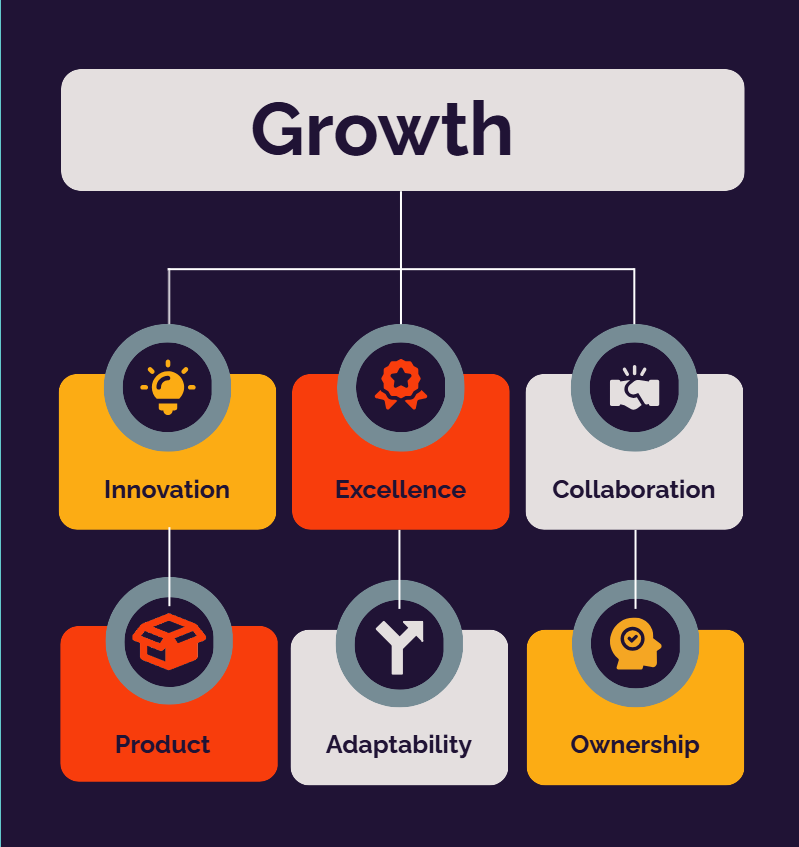What if the key to scaling your business growth isn’t investment or product but the people in your company?
If you have ever worked at a successful start up you will know that they have a peculiar energy. A small but focused team can produce disproportionate achievements in that period of zeal. Over time, as businesses grow, this usually dissipates. So how can you harness that early energy to drive business growth when your company is bigger or you want to scale up? Let’s take a look.

Want to add a sprinkling of magic to your content?
The importance of inspirational leadership
One of the most compelling motivators I have encountered is an entrepreneur named Martin Port. At the time, I was working at his then SaaS start-up, BigChange. He made staff feel able to innovate and make a real difference to the company’s future, a huge incentiviser.
I took lots of lessons from that period but key amongst them were these:
- Employee engagement: Engaged employees who buy in to the company purpose are more likely to contribute to its meeting its goals.
- Innovation and problem solving: Make the product good and keep improving it. Identifying pain points and creating solutions to them is a prerequisite for any business but for the SaaS sector, fast response and constant iteration is the key to staying ahead of the competition.
- Great customer service: This is not simply a selling tool for great companies, it’s a point of honour for customers and employees.
- Inspirational leadership: Never underestimate the power of an individual to galvanise a workforce or minimise attrition. It isn’t about being a fluent speaker, it’s about vision, integrity and self-belief.
So how can you juggle all of these factors and apply them within your own business?

The importance of employee engagement
For those who believe that employee engagement is a ‘nice to have’, rather than a ‘need to have’, here are some numbers for you.
In this year’s State of the Global Workplace Report, Gallup estimates the cost of low employee engagement at 9% of global GDP or £7.03 trillion. On the flip side, Gallup shows companies with higly engaged employees to be 23% more profitable and 18% more productive.
There is a clear link between success and business growth, so how do you measure levels of employee engagement?
How to measure engagement
There are lots of clues within a business as to whether or not it is thriving but creating a system of measures professionalises the process.
- Employee attrition rates: Monitoring and analysing the levels of staff turnover is a clear indicator of employee satisfaction. High turnover is a sign that something is wrong within the business. Employee attrition has a terrible effect on morale and productivity and the cost of recruitment is much higher than most businesses budget for.
- Anonymised employee engagement surveys: These are an effective and low cost method of getting honest feedback from employees. However, be careful not to fall into the trap of asking for feedback and then failing to respond to it.
- Customer satisfaction scores: Whether collected through surveys, scores on platforms such as Trustpilot or other means, how your customers experience your employees is a useful gauge of engagement. A great customer service team can quickly turn around disatisfied customers when it is working effectively.
Takeaway actions: If the metrics are low, consider initiatives that will help to increase engagement and promote business growth. Consider professional development schemes, peer mentoring and recognition programmes.

Steering towards growth
If employees are to play a key part in driving your business growth, clarifying their roles and how they relate to the company’s global objectives are an essential element. Here are some methods of achieving that:
- OKRs and KPIs: The judicious use of Objectives and Key Results and Key Performance Indicators for roles and teams help to clarify goals and make them measurable.
- Transparency: Foster open communication across the company through shared progress reports, ‘huddles’ and team updates.
- Communication and shout outs: Ensure people are recognised for their achievements by senior team and peers. Make sure that comms can go upwards as well as cascading down.
Takeaway actions: Ensure that there are goals at personal, team and company levels and that everyone is aware of them and feel responsible for achieving them. Share progress at regular intervals to check alignment and strategy.

Want to knock out the competition?
Growth mindset and innovation
Talking to businesses as an outsider can be fascinating. I have often heard frustration from the senior leadership team at the lack of enterprise at employee level, whilst employees of their company say their suggestions are ignored. Employees are often your best chance of identifying operational inefficiencies and gaps in the market so make the most of them.
- Collaboration: Encourage a culture of inter-departmental collaboration. Stopping people will stop silo working and encourage that company-as-team ethos that makes start-ups so energised.
- Reward innovation: How you reward people is up to you but it pays to incentivise achievement and everyone loves to feel seen and appreciated.
- A solution mentality: If you have ever worked in a toxic environment where every win is attributed to the manager and a scapegoat looked for at every loss, you will know what a blame mentality looks like. This is the opposite. The person who spots a problem isn’t held accountable for it and everyone works together to find a solution.
Takeaway actions: Audit your current culture. Does it reward and encourage innovative ideas and thinking? Create programmes and incentives within your business that help ideas and curiosity to flourish.
Final thoughts
A company’s employees aren’t just another Finance cost centre, they are your business’s cheerleaders and your most valuable asset in driving business growth. Foster a culture of openess and innovation, where departments work together to push the company forward and you will unlock a powerhouse of energy and talent that will provide sustainable and transformative growth.
If you would like to find out how Dewar Creative can help you with everything from blogs, case studies, web pages and more, contact me for a no-obligation chat.
![Ann driving a transit van [and driving business growth].](https://www.dewarcreative.com/wp-content/uploads/2024/11/Snag_ad12907.png)
